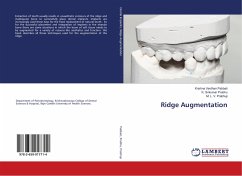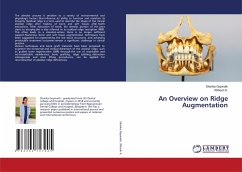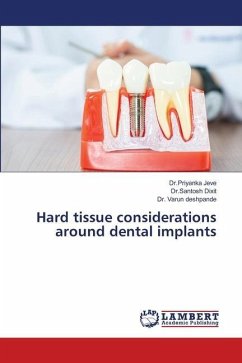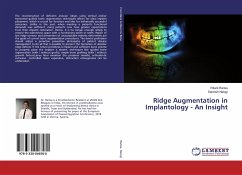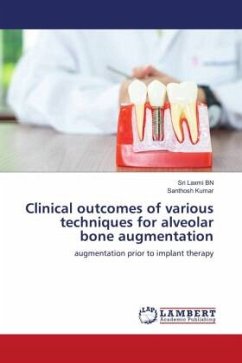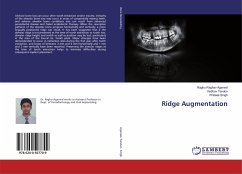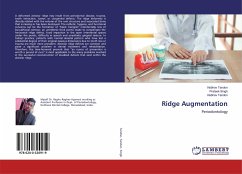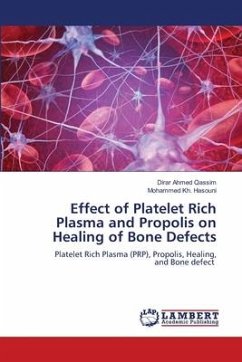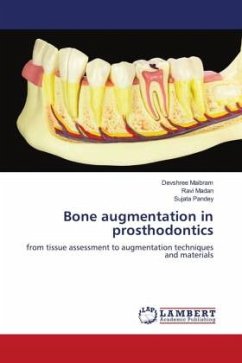
Bone augmentation in prosthodontics
from tissue assessment to augmentation techniques and materials
Versandkostenfrei!
Versandfertig in 6-10 Tagen
40,99 €
inkl. MwSt.

PAYBACK Punkte
20 °P sammeln!
The use of dental implants in most treatment plans today offers the possibility of restorative success using fixed prosthesis in many situations that would have previously been impossible. The goal of dental implant procedure is to restore the patient's optimal form, function, and esthetics. Various conditions like periodontal disease, traumatic extractions, dental trauma, and prolonged edentulism may compromise the volume and strength of the residual bone due to continuous resorptive process of alveolar bone. It leads to reduced alveolar ridge height resulting in an altered interarch relation...
The use of dental implants in most treatment plans today offers the possibility of restorative success using fixed prosthesis in many situations that would have previously been impossible. The goal of dental implant procedure is to restore the patient's optimal form, function, and esthetics. Various conditions like periodontal disease, traumatic extractions, dental trauma, and prolonged edentulism may compromise the volume and strength of the residual bone due to continuous resorptive process of alveolar bone. It leads to reduced alveolar ridge height resulting in an altered interarch relationship in various planes such as transverse, vertical, and sagittal planes. Implants placed without regard for prosthetic position often leave patients with dental restorations that are functionally and aesthetically compromised. It is often necessary to reconstruct (or preserve) the alveolar ridge when we are planning to place implants in an aesthetically and functionally optimal position so that it is properly surrounded with bone.



